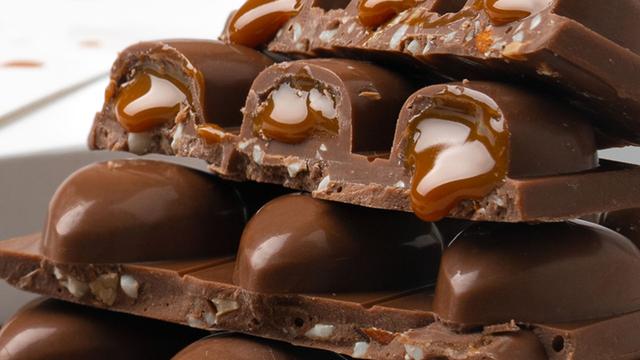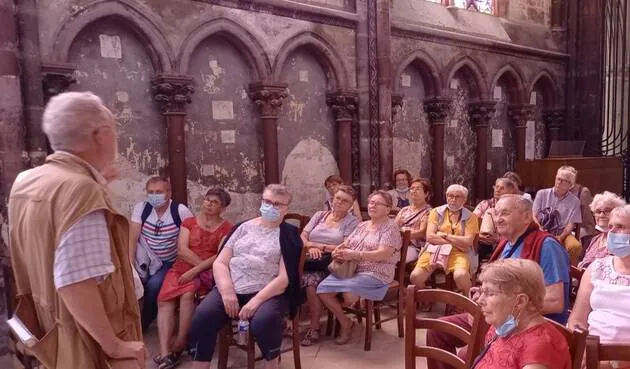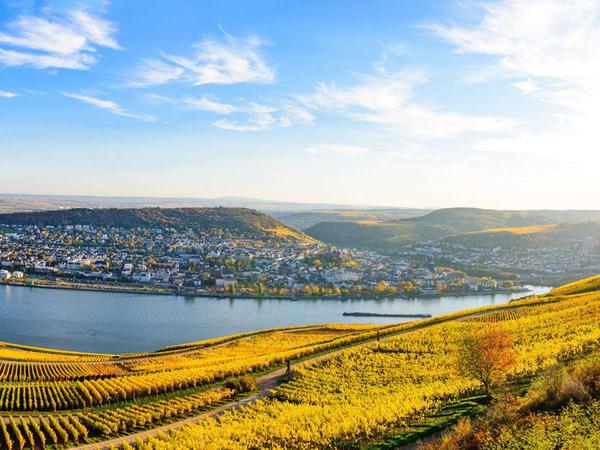Chocolate day. Why it is celebrated and who prepares it best in Bariloche
It is believed that as early as the 12th century, the native peoples of the coasts of the Gulf of Mexico used the Theobroma cacao beans as currency and consumed them as a drink. The Aztecs called it xocoatl, bitter water. In 1519 the first contact of the conquerors with chocolate took place, and despite the fact that it seemed to them a despicable drink, Hernán Cortés sent a shipment of cocoa “beans” to King Carlos V, presumably in 1525; the Court of Spain took a liking to this drink thanks to sugar and vanilla, two coveted products of the time. It is likely that Charles V sent some of the cocoa to his Austrian family, who immediately adopted it. From there to France there was only one step, and this was in 1615 when Louis XIII married Anne of Austria, but its consumption became widespread during the reign of Louis XIV, which began in 1643.
Until the end of the 18th century, chocolate was made by hand. Then came the colossal and extremely complex machines; It was the Frenchman Doret who introduced them in 1778. In 1819, Pelletier invented a device for mechanically producing chocolate that did the work of seven men. Since then, efforts have been made to perfect any mechanical system that would allow cocoa to be converted into the finest mass possible and be amalgamated with other substances.
His popularity became unstoppable. By the mid-1700s, the first chocolate shops emerged in London, and the French had begun to make chocolates in an artisanal way by then. In 1792, he opened the Josty brothers' Swiss chocolate shop in Bern.
With the 19th century, chocolate factories emerged. In 1815, the first French, in Noisiel-sur-Marne. In 1819, François Cailler set up his in Vevey, Switzerland. Five years later, John Cadbury opened his space in Birmingham, England. And four years later, the Dutchman Van Houten achieved, without intending to, thanks to a new hydraulic press, a solid chocolate: the bar was born. By 1905, Hershey's was producing milk chocolate bars in the United States.
In the first half of the last century, European immigrants who settled in Bariloche shaped the Patagonian flavor of this wonderful product. Here is a list of must-see places for all tastes and pockets.
1. MAMUSCHKA
A world of colors and flavors
Everything was sober in the world of chocolate. Everything was boring brown. But in 1989, some colorful dolls of a new logo they painted the illusion of moving to another dimension. The entrance door was the Timbal, a laminated chocolate with dulce de leche with which Mamuschka burst onto the scene, the brand that today offers more than 200 products including chocolates, creams, cakes, croissants and ice cream .
The chocolates are made using the bean to bar method, that is, from imported cocoa beans that the company roasts in Bariloche and turns into snacks without gluten, without soy, without transgenics and with organic inputs.
"We take the concepts of traceability from the wine and coffee industries," confesses Matías Carzalo, Production Manager and one of the firm's partners. Traveling to the producing countries, choosing the beans and making the cocoa mass locally make the difference. Chocolate from Peru has citrus notes and is creamy; on the other hand, the one from Ecuador is darker and melts more when you taste it. Both are used for presentations that have between 56% and 100% cocoa.
"But the magic is done by the toaster, which gives spirit and flavor to the grain. The secret: the inlet and outlet temperatures . We program the roasting profile because that is where the precursors of flavor are developed”, says Matías, at the foot of the machine. Once roasted, the grain is husked and ground. Then it is refined, mixed with organic sugar, it goes through a process called "concado" so that the dough is soft, it is tempered, it is molded so that it shines and breaks when it splits and, finally, it is wrap each tablet by hand.
chocolates moroccan (bars with hazelnut praline, almonds and sugar, with dark, semi-sweet and milk chocolate) and berry diamonds (ganache with organic raspberries, blueberries, strawberries and blackberries) are just two of the delicacies that this company exhibits in its stores in Bariloche, San Martín de los Andes, Villa La Angostura, El Calafate and Buenos Aires.

Mamuschka
Miter 298. P: (0294) 442-3294. Base of Cerro Catedral (only in winter). T: (0294) 446-0135.
2. RAPANUI
The evolution of the Fenoglio
60, 70, 80, 90. They are not measurements of a model, nor decades. These are the percentages in which the precious and obscure treasure, pure cocoa, is present in the different Rapanui creations, from grains from Brazil, Ecuador and Colombia, among other origins from which the cocoa is imported. Fenoglio family .
Many things have changed in this pandemic. The consumption of dark chocolate, for example, grew. “Before, 80% of what we sold was milk, 10% white and the same amount bitter. Now those figures are 50, 20 and 30%, respectively”, details Karina Comte, Production Supervisor, next to tanks of 3,000 kilos of chocolate.
A few meters further on, behind a thermal door, we look into the sweetest territory of the Pole. There, at 20° below zero, they pack the star product of the house: the Franui , those raspberries dipped in white and dark chocolate, or white and with milk, of overwhelming success.
The boom is such that they sell around 175,000 pots per week in Argentina. "We sell 25,000 kilos de Franui every seven days because we export to Brazil and Chile”, says Comte. Last year they opened an exclusive factory for this product in Valencia, Spain, which produces for all of Europe under the watchful eye of Diego Fenoglio, who is now studying new Franui factories in the United States and Asia.
Rapanui opened a megastore in downtown Bariloche in 1996, and a decade later, the first in Buenos Aires. It already has 11 throughout the country, including those on the street and others from "blind kitchens", only for delivery.
Aldo and Leticia Fenoglio, in charge of the new businesses, lead 600 employees who produce 90 tons of chocolates per month , with which they shape 300 different articles.
“This year we are going to inaugurate our third manufacturing plant in Bariloche because we have five times the sales we had before the pandemic,” reveals Comte. "Products for more personal consumption have grown: those that are for indulging, for trying something new," she adds.
Rapa Nui
Miter 202, esq. Villegas. T: 0810-888-RAPA (7272).
3. BENROTH
My grandmother sent me
At the entrance there is a garden full of roses. Then the doors of the premises. Behind the counters, the factory. And above, the house. Everything is modern, and at the same time, like in 1965, when it was inaugurated. At Benroth they serve customers from four generations, the same four generations that make and sell.
Bernardo Benroth is 84 years old and is of German descent. . He learned the art of chocolate from Swiss and French chefs who worked in hotels in Bariloche. Aileen Sill , his wife, is 86 and of Irish descent. Both still walk between the machines. In the mid-1960s, they built their house and factory. They had four children. Silvina, one of them, now has the voice of command in the company, along with her husband, Eduardo Grassi. Michelle, granddaughter of the founders, attends the premises. León, 8-year-old great-grandson, is the perfect tester of new products. The circle of life is shaped like a chocolate in this cult chocolate shop, located outside the central circuit of Bariloche.
“My grandmother sends me to bring her chocolates because she came to buy when she traveled here for her honeymoon, it is something that they tell us very often. We also know that we are the local chocolate shop. We produce as we sell. What you see is all our stock”, reveals Silvina.
In Villa la Angostura they have another factory with premises, and in Buenos Aires, a sales franchise.
The most recent they added were the caramel cookies , with those who started timidly in the pandemic, but liked it so much that they were incorporated: “We put almonds in the dough. They weigh 105 grams and we make them with the same Belgian chocolate that we use for the bars and the rest of our 60 products.”
Among the most successful are the Mille-feuille of milk and white chocolate with dulce de leche ; milk chocolate filled with cream with organic sour cherries (macerated in liquor up to nine years); milk chocolate with sultanine grapes in cognac; homemade butter with semi-sweet chocolate and tablets with vodka and nuts .
“We make spiced chocolates –with cardamom, cinnamon, ginger–, ideal for after-dinner, with a little coffee. And other semi-bitter with smoked paprika, spicy, perfect for pairing with cheeses, wines or dark beers”, details the artisan.
They are also encouraged to some audacity, such as white chocolate with lime, lemon and coconut , another tablet with pink pepper and orange peel, and one called Pecado Capital, which has cream, salted pistachio, Baileys, coffee, coffee liqueur and milk chocolate.
Benroth
Beschtedt 569. T: (0294) 442-3326.
4. THE CHOCOLATE
Works of art that are eaten
They are jewels. Round like miniature planets, or replica objects: guitars, balls, golf shoes. Hand-painted, they have a design and a delicacy that is painful to bite off. And they never disappoint: the chocolates and bars of La Chocolaterie are gems to savor slowly, as if you could slowly savor a sculpture.
For six years they have been making chocolates made with Belgian raw materials . One of its most impressive lines was the one launched in 2020 in accordance with the total solar eclipse, and which represented the solar system with chocolates, painted one by one. “We are also recognized for our Spiced chocolates, with cinnamon, cardamom, pepper, salt. .. Many manufacturers use Belgian chocolates, but the ambassador in Argentina visited us and for us it was a great recognition. My first surname is Belgian and the second, Dutch," he says. Maria Eugenia Locreille Van Wynsberghe , at the head of this business that also includes an ice cream parlor and a cafeteria.
This family business reinvented itself through e-commerce, which allows it to reach the entire country and the United States with its shipments. “We sell not only chocolates, but experiences. We offer Chocolate Tasting, a box to star in a tasting from the grain, which we guide by Zoom. And we will add others. We want to propose that customers imitate the process of making chocolate as a hot, spicy drink, made in a mortar, just as the Mayans used to prepare. Demonstrate that one can make their own concoction from ribs”, anticipates María Eugenia.
Among her delights, the freeze-dried strawberries (it is a dehydration process) chocolate dipped with milk and white; the truffles , the tablets with nuts , and chocolate medallions with caramelized almonds and toasted walnuts and hazelnuts, to enhance the flavor of the dried fruit.
The preparation is done on the premises, by hand, without preservatives or artificial aromas and with the addition of natural ingredients from Patagonia. The aesthetics of the packaging is as careful as the finishing of the chocolates.
They also have a point of sale in the commercial gallery of the Llao Llao hotel (Av. Bustillo Km 25) and possible franchise openings, which they are analyzing.
The Chocolaterie
Av. Bustillo Km 15.5. T: (+54 9 294) 450-1015.
5. FRANTOM
certificate of delicious
“We don't have a huge variety of products, because we chose to stand out for being extremely artisanal. I give you two examples: there is a person who makes nougat by hand all year round and we offer a premium line with painted chocolates, among which there is a box with little animals that we decorate one by one”, enthuses Ann Iriondo, operational manager of Frantom, which opened in 2002.
Gabriel Di Tullio He had been a partner of the founder of this company, of Italian origins, and four years ago he took over the reins of the business. He updated the image of the brand –which was closely associated with a target of graduates on a noisy trip– and brought it to a much broader audience, with changes in the packaging, in the aesthetics of the store and in marketing.
This is how they expanded their portfolio, in which the star product are chocolate bars (semi-bitter, with milk and white) with dried fruits and with red fruits . The chocolates en rama, the mille-feuille with dulce de leche and the alfajores also stand out as favorites.
Frantom has a shop in Bariloche selling chocolates, a cafeteria (they complement the traditional hot chocolate in winter with cold coffees with chocolate and caramel in summer) and a pastry shop. And now it plans its expansion with the opening of a store in Chile.
“We offer 32 products with online sales and delivery throughout the country, a service that has grown a lot in this pandemic and is highly required in northern Argentina and on the coast. We even have diet chocolates, not only for diabetics, but for anyone who wants to eat without added sugar”, proposes the manager of this chocolate shop which, between its factory in Bariloche and the local one, has a staff of 30 permanent employees, to whom Reinforcements are added in high season.
frantom
Miter 201. T: (+54 9 294) 442-2437.


